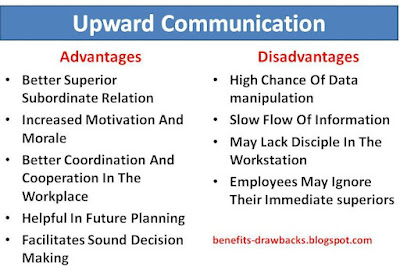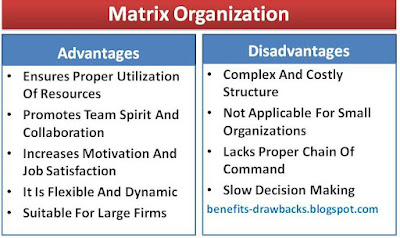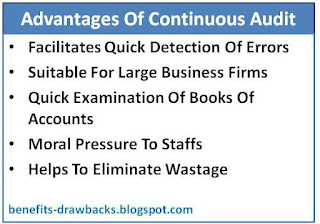What Is Downward Communication ?
It is just opposite of upward communication (where message flows from lower to top level of management). Downward communication is a type of communication process in which information, messages, orders and instructions are flow or transmitted vertically down from top management to bottom by following proper chain of command (From top management to middle level management to lower level management to subordinates) in the organization. This communication is helpful in maintaining better chain of command and discipline in the company.
Benefits Or Advantages Of Downward Communication
The main advantages of downward communication can be highlighted as follows:
1. Easy To Assign Duties And Responsibilities
In downward communication, instructions and messages directly comes from the top authority which is helpful to assign jobs and delegate authority and responsibility to different levels of management.
2. Maintenance Of Better Discipline
Another advantage of downward communication is that it follows strict chain of command in the workstation and all members should follow the instructions and orders received from top management. So, it helps to maintain proper discipline in the organization.
3. Increased Efficiency
Subordinates get clear instructions, suggestions and guidance from higher management. It helps to increase efficiency and performance at work which helps to achieve organizational goals effectively.
4. Avoids By-passing
As we know that upward communication system suffers from the problem of by-passing of hierarchy due to the lack of proper chain of command. But downward communication minimizes this risk because there is formal chain of command in the organization.
5. Effective Process
Management can clearly explain organizational goals, policies and procedures more clearly through downward communication. Instructions and orders can be issued more effectively than other forms of communication methods. Therefore, it is more effective process of communication while comparing to others.
Drawbacks Or Disadvantages Of Downward Communication
The main disadvantages of downward communication can be described as follows:
1. It Lacks Flexibility
Downward communication is a one way process in which information flows from top to bottom only. Employees cannot give suggestions and share their ideas with upper level managers. Therefore, this process lacks flexibility.
2. Time Consuming Process
Another drawback of downward communication is that it is time consuming process. Information, messages, orders and instructions pass through different levels of management before reaching to the subordinates. Therefore, operational activities may be hampered because of the delay in transmission of information.
Also Read:
Advantages And Disadvantages Of Horizontal Communication
Advantages And Disadvantages Of Upward Communication
3. Low Morale And Motivation
Because of its directive nature, it discourages employee participation and dos not allow them to provide suggestions and views to the management. It may create frustration, decrease motivation and morale of the subordinates.
Pros And Cons Of Downward Communication In Short
Pros:
- It ensures proper delegation of authority, responsibilities and assignment of jobs
- It improves efficiency and boosts employee performance
- It discourages by-passing of hierarchy in the organization
- It gives clear explanation of plans and procedures of the company
- Management can monitor and control employees' activities
- Better discipline can be maintained because of better supervision and control.
Cons:
- It is a time consuming process
- It does not promote subordinate participation in the decision making process
- There is a chance of employee frustration, decreased morale and motivation
- There is no flexibility in this process of communication
- It lacks employees enthusiasm
- There may be a possibility of distortion of message because of long transmission process






























